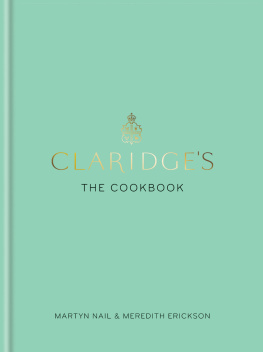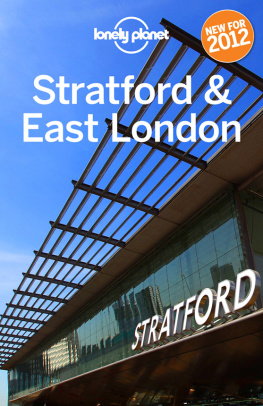Twelve Day Trips from London
A simple guide for visitors who want to see more than the capital
By
Dee Maldon
Bookline & Thinker Ltd
Introduction
Why take any day trips from London? After all London has so much to see and do. Who could ever be bored here?
But escaping London is not about being bored. Its about visiting the quieter parts of England, experiencing a different type of history, seeing the countryside and discovering the smaller towns of this most interesting land. For instance, many visitors are often surprised to discover that London wasnt always the nations capital.
And getting out of the city is easy to do. The UK has a fairly good public transport system both by bus or train. As a result, all the journeys in this book can be made after breakfast and you can be back in your hotel room and tucked up in bed by night time.
But train and bus schedules do change. As a result, weve resisted including any departure and arrival times. However we have included website links for the most up-to-date information.
Train travel is frequently cheaper after 10am but check that any cheap ticket does not restrict your return journey to after 6 pm or later. Please buy a ticket before you board the train, ticket inspectors are not the most sympathetic of creatures. Tickets can be bought from sales desks and machines around most stations.
If there are two adults, and especially if you are travelling with children, one of the adults should buy a Network Card. This allows family discounts on train travel to and from London if your journey is outside commuting time. The discount can be sizable, with children often travelling free and each adult ticket reduced by approximately one third.
Coach travel is often, although not always, cheaper than train. We tend to use the term bus to refer to travel within a city. A coach refers to buses that travel between towns much like the old coach and horses of times gone by. Most coaches from London leave from Victoria Coach Station, not far from the Victoria train and tube stations.
Please note that this book is not an in-depth guide. Instead, we hope to provide information on where you can go from London in a day, how to get there and a brief taste of what each place might offer. Longer trips out of London require more extensive, and expensive, guide books.
Have fun with your explorations.
Bath

Distance from London: 100 miles or 160 kilometres
Why visit?
Bath is a compact Georgian town that is probably most famous for its Roman Baths. However, its Georgian architecture means it has been the setting for many Jane Austen novels and films based on her work.
Brief history
Mineral hot springs have made the area attractive to people since prehistoric times. The ancient Celts worshipped the Goddess Sulis at the springs, and King Bladud, father of King Lear, is said to have cured himself of leprosy by rolling around in the mud where the hot springs bubbled to the surface.
The Romans built a fort, Aqua Sulis, here in AD 60 and dedicated it to the Roman Goddess Minerva. As the Roman settlement grew, the springs were plumbed to create public baths with plunge pools, drainage, heated rooms, beautiful terraces and temples.
The area has a strong connection with King Arthur, who fought to keep the Celtic tribes free from being overrun and over-ruled by the Saxons. Eventually the Saxons did make a successful invasion, and Bath grew in such importance that Saxon kings were crowned here. Large monasteries accrued wealth, and the city had to have large fortifications to protect its riches from Viking invasions.
The settlement grew further in medieval times as a market centre for the wool and cloth trade, attracting both small and large farmers.
However, the town became truly fashionable in the 18th century when a wealthy benefactor sought to improve the city. Ralph Allen was a post master who achieved prominence by developing a new system for delivering mail. He wanted Bath to be beautiful. Two architects, a father and son team known as John Woods, the elder and younger, gave Bath its wide spacious streets. This offered a sharp contrast to the overcrowded lanes in London. Local quarries of Bath stone were used to create the beautifully curved buildings with their perfect symmetry and proportions. The style was copied from a 16th century Venetian architect, Andrea Palladio, hence the style now known as Palladian architecture.
The new architectural style brought the city a refined air, which duly attracted a refined populace. The citys Master of Ceremonies at this time was Richard Nash, better known as Beau. He was an Oxford University drop-out, a gambler and a dandy. But he knew how to attract stylish people to the city. Many rented rooms, floors and even whole houses so they could spend the social season here. Bath became a place to see and be seen. As a result, Bath is the setting for many of Jane Austens wealthier characters.
Today Bath is a World Heritage Site and one of the most beautiful cities in England with Roman, Georgian, Victorian and modern attractions.
How to get here
Train
From London Paddington Station, trains run approximately every 30 minutes and the journey takes 1 hour and 40 minutes.
Visit www.thetrainline.com
Train info. tel: 08457 48 49 50
On arrival, walk mile north on Manvers Street, past the Southgate shopping area, to reach The Roman Baths and The Pump Rooms. Other sites are within walking distance.
Bus
The coach journey takes more than 3 hours in each direction.
For information visit
www.nationalexpress.com
Walk north on Southgate Street and onto Stall Street, mile, to reach The Roman Baths and The Pump Rooms.

Places to see
Roman Baths
Much of the Roman building was lost to the city until the 1720s when sewers were being dug and workers uncovered the huge bronze head of the Goddess Minerva. Archaeological work has since revealed the full workings of the Roman baths.
Allow approximately two hours to tour the spring, temple and the baths. Despite its two thousand year history, the site is remarkably well preserved with reservoir, drainage and treatment pools. The baths contain the only mineral hot spring in England, and its temperature, a cosy 46C or 115 F.
www.romanbaths.co.uk
Admission includes free audio tours in several languages.
If you are planning to visit the Fashion Museum then you can combine tickets and save money.
Fashion Museum
Both men and womens clothing from the 17th century to present day are on display. In addition, visitors can try on replica 18th century corsets and crinolines, while children can dress themselves in Victorian costume. Those who want to see more than the fashion collection can book ahead and visit the Fashion Museum Study Facilities email
In addition to historic fashions, the museum hosts contemporary looks from famous designers. As expected, this collection is constantly changing.
Audio guides are available.
www.fashionmuseum.co.uk
The museum can be found at the Assembly Rooms, Bennett Street, a monumental building in its own right as it was the gathering place for Georgian parties and balls.











